Recent Articles
Popular Makes
Body Types
2017 Audi S4 vs. 2017 BMW M3: Which is Best?

2017 Audi S4 vs 2017 BMW M3 profile ・ Photo by Audi / BMW
The days are gone when you could tolerate a purpose-built, two-door sports car. Now you have a family, and the responsibilities that come with it. Does that mean you should just throw in the towel and buy a Toyota Camry? Not quite. What you need is a sport sedan. Enthusiast-market four-doors have never been more exciting. Forget the sacrifice; the latest performance sedans are quicker than many sports cars — past or present. For two examples of four-door fun (at an attainable price), consider the BMW M3 and Audi S4. Both cars come from storied German performance luxury manufacturers, both feature high-output motors and both have extensive lists of premium features. Here’s how the 2018 M3 and 2018 S4 measure up.
Pedigree
Before diving into the competitive minutia, let’s review the BMW M3 and Audi S4’s origins. Introduced in 1986, BMW’s M3 shared little in common with the standard 3 Series of its day. Its four-cylinder engine was derived from the M1’s inline six-cylinder, the brakes and suspension components were hardcore, and the interior was no-nonsense. The following generations would embrace naturally aspirated inline six-cylinder powertrains. A V8 was introduced in 2007, but BMW would return to the inline six-cylinder with the current-generation M3 (albeit with a pair of turbos). Though the M3 has grown heavier and more luxurious over time, many still consider it the defining sport sedan. In 1995 — four years after the A4 was introduced to the U.S. — Audi gave us the S4. Featuring a twin-turbocharged V6, the S4 was a conservatively styled performance alternative. Like the M3, the S4’s powertrain has changed over time, transitioning from the bi-turbo V6 to a 4.2-liter V8, to a supercharged V6, and finally to a twin-scroll turbocharged V6. For a brief interval (from 2006 to 2008), America was given a proper M3 rival in the form of the 420-hp RS4. Alas, sales never picked up and the S4 would be forced to carry the performance sedan torch here in the U.S.
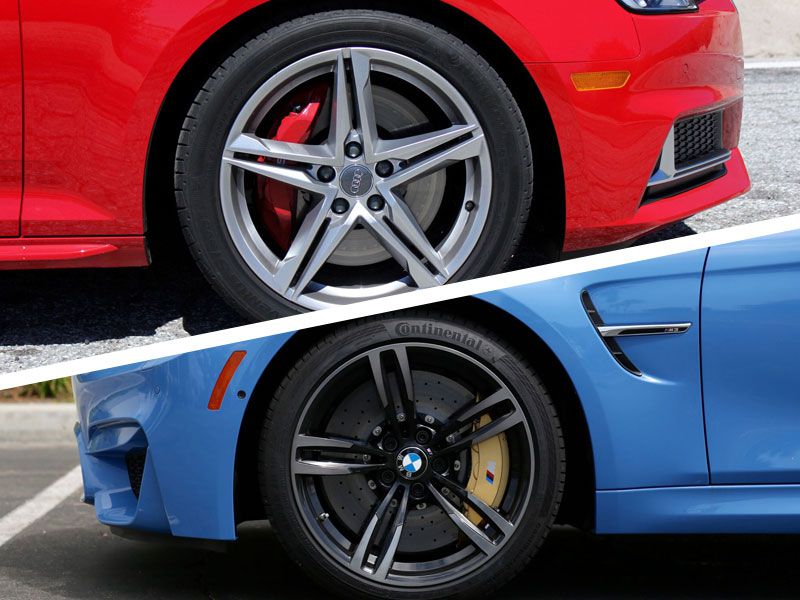
Photo by Audi / BMW
Styling
For as long as BMW and Audi have churned out performance machines, the two brands have prioritized maturity and subtlety of design. Still, between the BMW M3 and the Audi S4, one model is decidedly more reserved. BMW’s M3 is more imposing from every angle than the S4. In fact, the S4 has never looked so subtle. Aesthetic distinctions between the A4 and S4 include platinum treatments on its single-frame grille, air intake slats, mirror covers, and rear diffuser, 18-inch or optional 19-inch wheels, quad exhaust ports and optional red brake calipers.
Meanwhile, compared to the BMW 340i, the M3 features a unique front and rear fascia, power dome hood, forged 18- or 19-inch wheels, a side-mounted air channel, flared fenders, painted brake calipers and a trunk-lip spoiler. On top of these accents, the M3 is offered in a range of eye-popping colors. While we appreciate the S4’s cohesive shape, the M3’s taut, toned body gets us more excited.
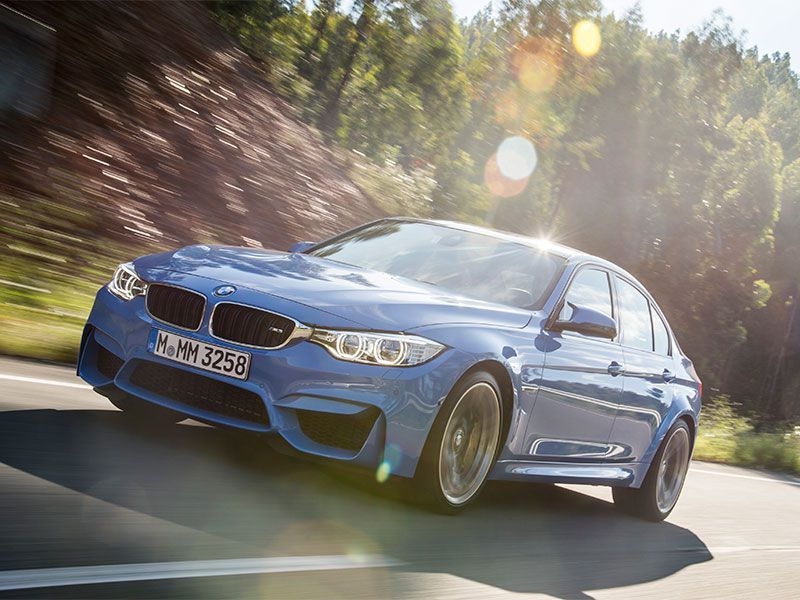
Photo by BMW
Comfort and Convenience
As much as we desire exterior personality in our sport sedans, we long for interior comfort and convenience. Both the BMW and Audi put together a handsome, logical cabin, but the S4 goes the extra mile to make driver and passengers feel special. From its supportive, plush leather/Alcantara seats to its dazzling Virtual Cockpit display, the S4 intertwines sporty and sophisticated perfectly. Just above the thick, flat-bottomed steering wheel, Audi’s reconfigurable, 12.3-inch digital driver monitor boasts vivid colors, intuitive menus and safety-optimized redundancies. BMW M isn’t the zero-frills performance brand it once was, but M car cockpits are still designed with the driver in mind. A truly spectacular thick-rimmed steering wheel frames a classic M gauge cluster. Dual-clutch automatic M3s feature an ergonomic gear selector, while manual-equipped models utilize a leather-wrapped shifter. Like the S4, the M3’s sport seats are equal parts comfortable and form fitting. The rest of the M3’s cabin is less inspiring, with a button-heavy center stack and busy dashboard. It’s a closer call than the exterior comparison, but we’d pick the S4’s tech-laden cabin over the M3’s analog arrangement.
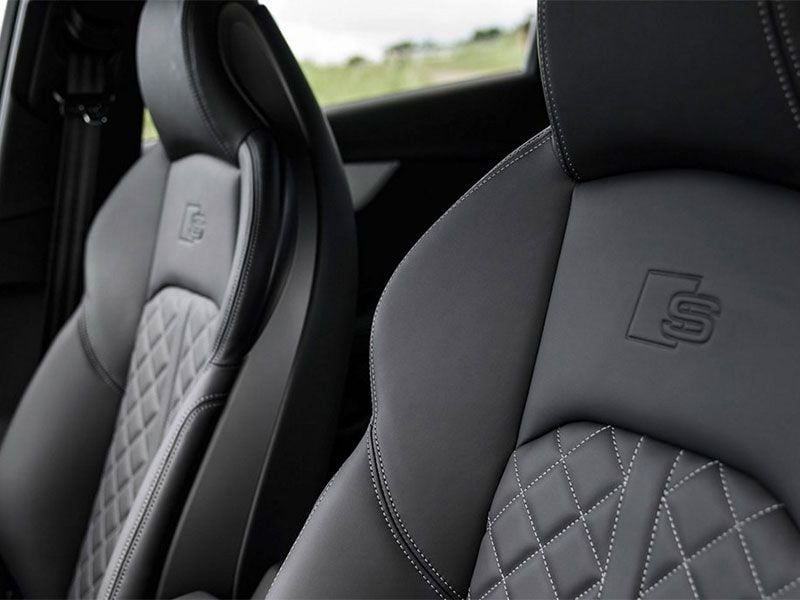
Photo by Audi
Powertrain
Moving from largely subjective to mostly objective distinctions, let’s lift the hoods of the M3 and S4. Both sedans use forced-induction six-cylinder engines to boost output and efficiency. Audi slots a single turbocharger within the V of the engine. Peak torque comes from just 1,370 rpm all the way to 4,500 rpm, affording thrust from a large portion of the rev range. With 354 horsepower and 369 lb-ft of torque on tap, the S4 makes 40 percent more power than the standard A4. Sprints from 0 to 60 mph require 4.4 seconds and top speed is limited to 155 mph. Audi’s S4 certainly kicks, but BMW’s M3 surges. Trumping the S4’s output and torque figures, the M3 leverages 425 hp and 406 lb-ft of torque via a twin-turbocharged 3.0-liter inline six-cylinder to reach 60 mph in 4.0 seconds. Like Audi, BMW cuts fuel at 155 mph, but judging by how the M3 gains momentum, we’d estimate it would pass 180 mph without restrictions. Progressive, smooth and robust, the M3’s engine is a magnificent work that completely overshadows the S4’s efficiency-engineered heart.
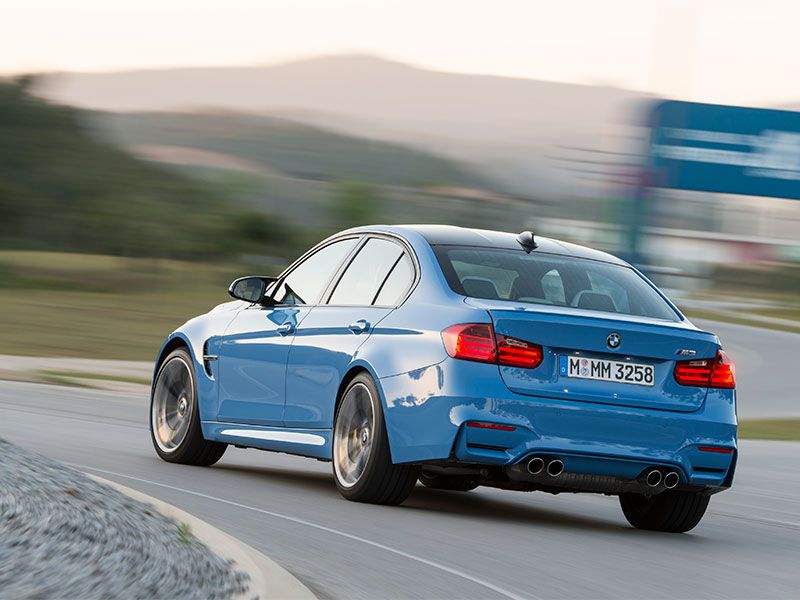
Photo by BMW
Transmission and Fuel Economy
In years past, Audi offered its S4 with both manual and automatic transmissions, but as manual-equipped car sales slumped, the automaker scrapped its stick shift. Today, the S4 uses an eight-speed automatic that offers manual shifting via the gear selector or steering wheel-mounted paddles. In normal drive mode, the transmission smoothly works through the gears to maximize efficiency. In sport mode, it holds gears to keep the turbocharger spooled. Like Audi, BMW has seen a major dip in manual transmission car sales, yet M holds fast to the standard gearbox. If the slick-shifting six-speed doesn’t appeal, a seven-speed dual-clutch automatic is available for additional coin. The latter gearbox is just as smooth as Audi’s eight-speed during casual driving, but it shifts much quicker and more aggressively than the S4 in manual mode. We’d love to mash the throttle of both cars all day, but owners who prefer a healthy relationship with the gas station should choose more restrained driving habits. Clawing back some ground in this category, the S4 flashes ratings of 21 mpg in the city and 31 mpg highway in the face of the M3’s 17 city/24 highway ratings. The S4’s eight-speed automatic is faultless but ultimately less engaging than both of the M3’s transmission options. For this reason, we’ll award the pulse-pounding M3 another point.
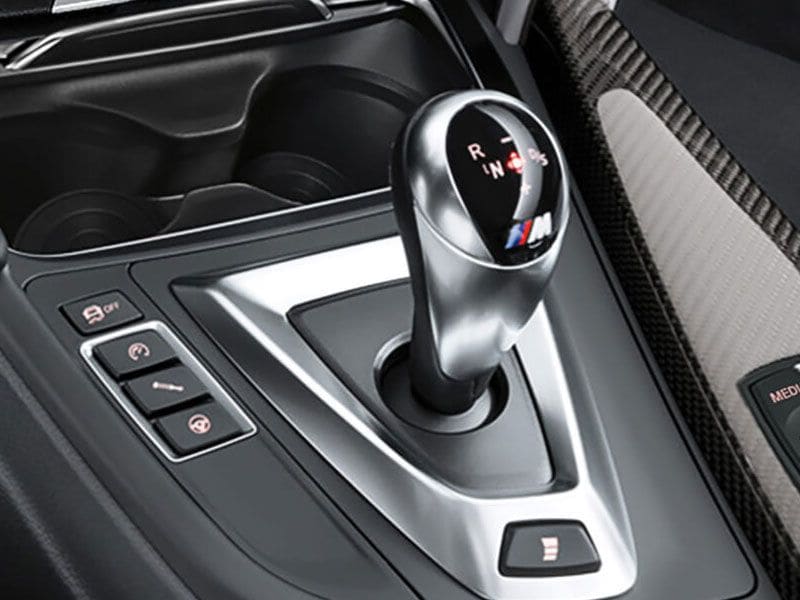
Photo by BMW
Driving Dynamics
Audi is synonymous with its Quattro all-wheel drive system — a rally-bred configuration that helped secure countless victories for the automaker’s Group B racecars in the 1980s. In the S4, Quattro delivers stability, confidence and intelligent power application. Thanks in large part to Quattro’s sophistication, good drivers look and feel like professionals. Since the beginning, BMW’s M3 has used a rear-wheel drive system with neutral handling properties. With literally dozens of driver-adjustable settings, the latest M3 can be tailored precisely to your driving style. On a spectrum of zero wheel slip to tail-wagging power slides, the M3 can do it all. Despite weighing more than any preceding M3, the F80 feels just as nimble and exciting to drive as ever. An outside observer can look at the S4 and M3 working their way around a track and see similar levels of precision, but drivers will feel a world of difference between the two cars. Put simply, the S4 tolerates bad behavior and the M3 awards skill. Fun can be had with both sedans, but only one earns the right to be called a true driver’s car. It’s another notch in the M3’s belt.
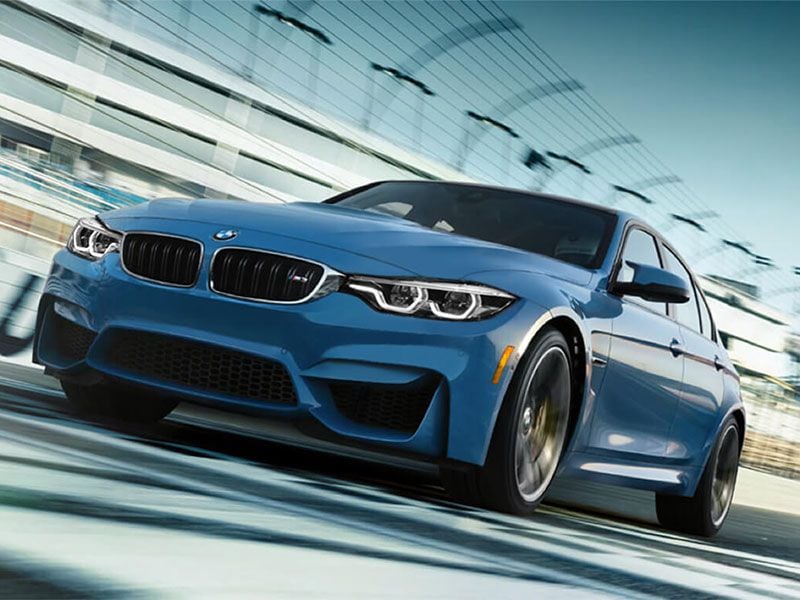
Photo by BMW
Safety
The 2018 S4 features a number of standard safety goodies. Audi's semi-autonomous driver aids combine with electronic stability control and 10 airbags. The 2018 M3 comes standard with eight airbags, electronic stability control and adaptive cruise control. The BMW's optional Driving Assistance package adds blind-spot monitoring, lane-departure warnings, a surround-view camera system, speed limit information and forward-collision warnings with automatic emergency braking. Both the M3 and S4 can be optioned with a number of advanced driver aids, but the S4’s long list of standard safety features earns a win here.
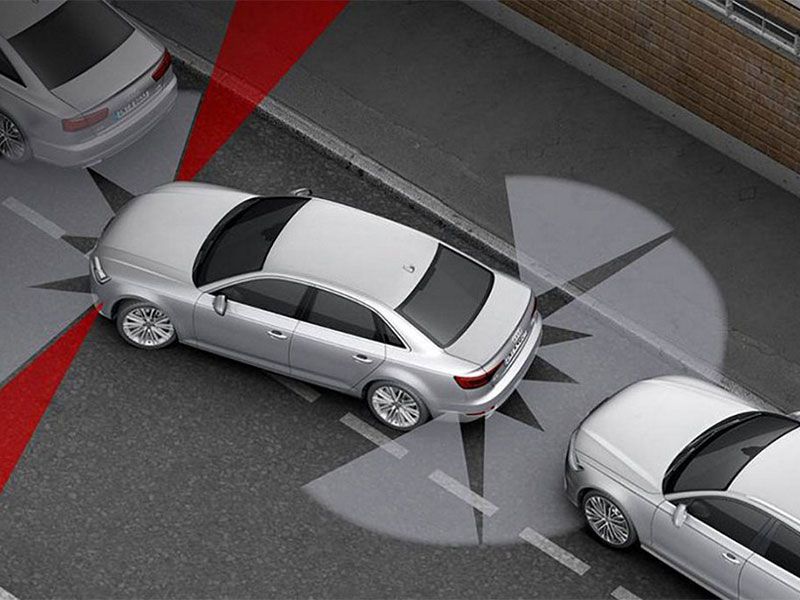
Photo by Audi
Utility
Four full-size adults fit with plenty of room in the S4. Rear seat head, leg and shoulder room is generous, thanks in part to a longer wheelbase compared to the previous A4/S4 generation. The trunk swallows 13 cubic feet of cargo and can expand with the split-folding rear bench. Surprisingly, the M3 offers significantly more passenger volume than the Audi and nearly as much trunk space. With the same split-folding rear bench versatility as the S4, the M3’s trunk is just 1 cubic foot smaller. This one comes down to objective measurements, giving the M3 another victory.
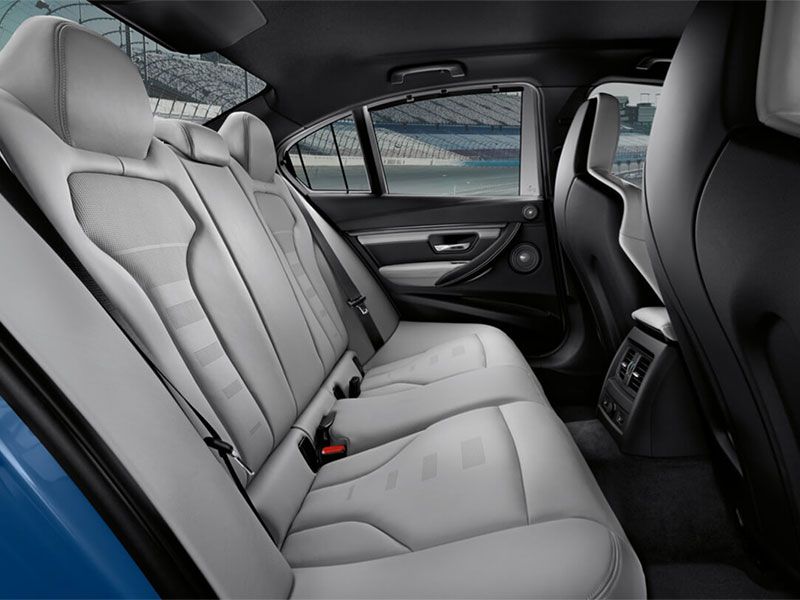
Photo by BMW
Value
We wish value was a cut-and-dry decision, but numerous variables add complexity. To boil value down to a few criteria, let’s look at engineering, standard features and options. BMW takes a no-contest edge in terms of performance engineering. Its engine, suspension, brakes, steering and transmission combine for a sports car experience (with luxury car ride quality).
At $64,000, the 2018 BMW M3 is $12,600 more expensive than the 2018 Audi S4. Apart from its stupendous performance hardware, the M3’s heated cloth sport seats, iDrive infotainment system, 16-speaker Harmon Kardon sound system and LED headlights are all standard. The S4 does one better with heated leather seats, three-zone climate control, a backup camera, "Pre Sense" driver aids and a 19-speaker Bang & Olufsen stereo. Enthusiasts may value the M3’s elite-grade engineering more than convenience features, but we can’t ignore the S4’s robust content for the money.
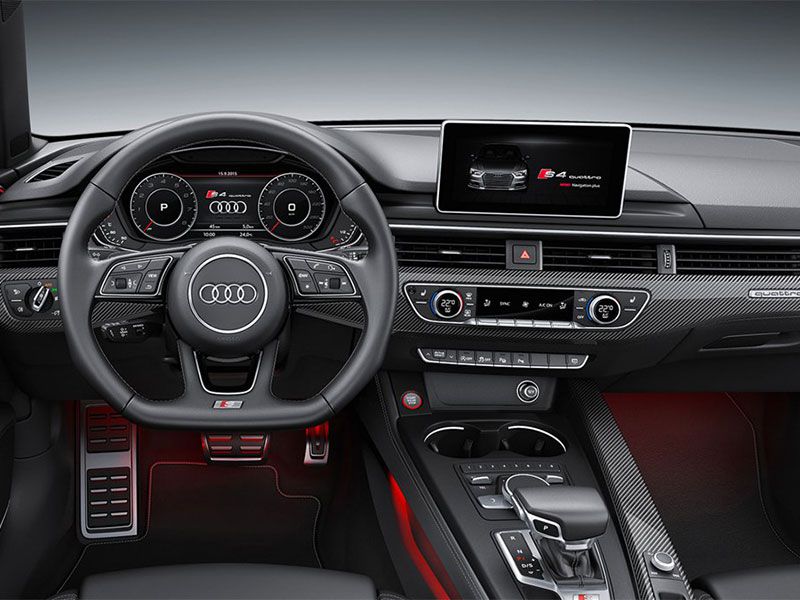
Photo by Audi
Verdict
A faceoff between Audi’s S4 and BMW’s M3 may have seemed unfair from the beginning, but this comparison reveals two distinctly attractive sport sedans, each hunting for its own prey. The S4 is quick, handsome (in a modest way), high-tech and well-equipped. Those who appreciate Audi’s approach to luxury but crave a bit more pep than ordinary luxury sedans will be more than satisfied with the S4. If the S4 is a sport sedan, then the M3 is a super sedan. BMW’s hottest 3 Series is agile, potent and bold. From the low-slung stance to the M-engineered powertrain, gearbox and handling, the M3 is what automotive addictions are made of. If you want a performance four-door, the M3 remains the segment standard.
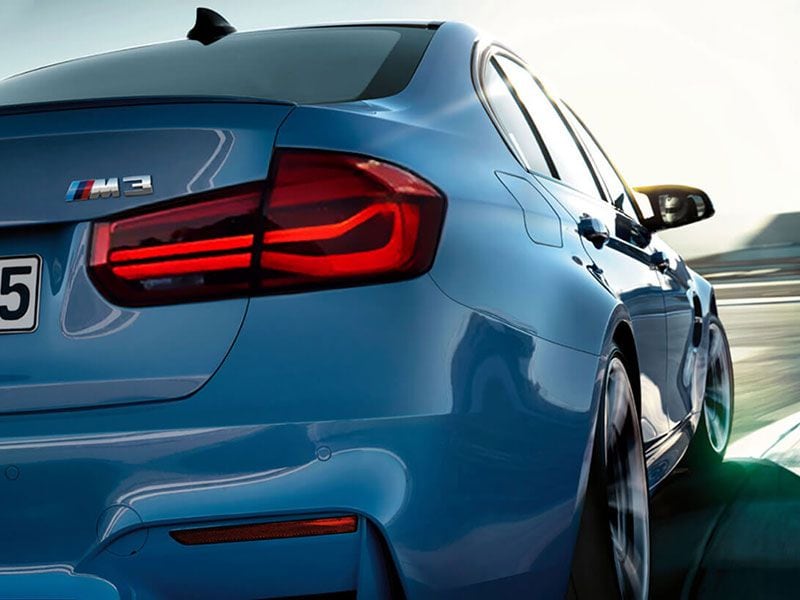
Photo by BMW